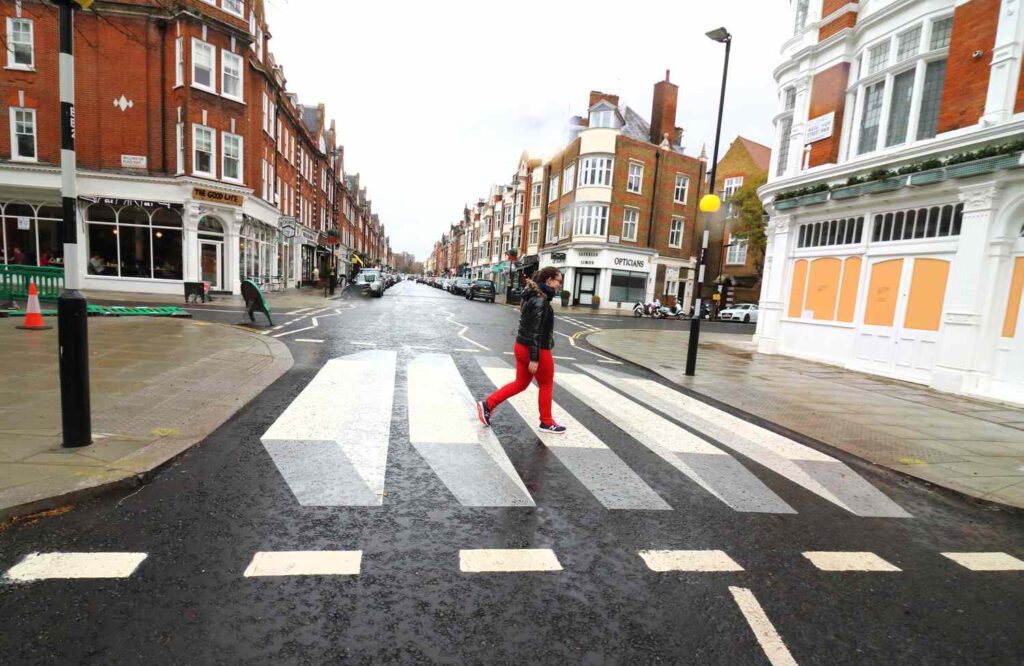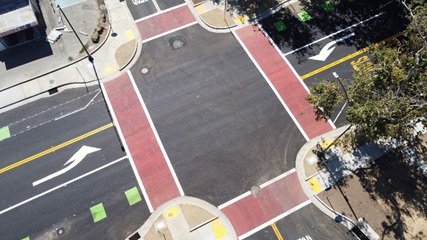In a world where urbanization and motor vehicle use continue to rise, the need for safer, more pedestrian-friendly environments is more urgent than ever. Enter traffic calming — a strategic approach to reshaping how streets function to reduce vehicle speed, improve safety, and enhance the overall quality of life for everyone.
But traffic calming is more than just a set of tools or road designs — it’s a philosophy rooted in equity, sustainability, and community well-being.
What Is Traffic Calming?
Traffic calming refers to a range of physical design and management strategies aimed at reducing the negative effects of motor vehicle use, altering driver behavior, and enhancing conditions for non-motorized users.
It’s not about banning cars. It’s about rebalancing the street space so that it works better for pedestrians, cyclists, and residents, not just drivers.
Core Objectives:
- Reduce vehicular speeds in high-risk areas
- Decrease traffic volume in residential zones
- Improve safety for vulnerable road users
- Reclaim streets as public spaces
Why Do We Need Traffic Calming?

The urgency for traffic calming is rooted in real-world issues:
- High-Speed Crashes: A pedestrian hit by a car at 20 mph has a 90% chance of survival. At 40 mph, it drops to 10%.
- Urban Sprawl: Car-centric development has left many neighborhoods unsafe or unpleasant for walking and biking.
- Environmental Impact: More cars mean more emissions. Slower, more conscious driving contributes to environmental health.
- Noise Pollution: Slower traffic reduces urban noise, making communities more peaceful and livable.
Traffic Calming Is About:
- Saving Lives
- Promoting Health
- Creating Community
Types of Traffic Calming Measures
Traffic calming is not a one-size-fits-all solution. Planners use a mix of engineering, enforcement, and education. Below are some widely adopted strategies:
1. Vertical Deflection Measures
These physically raise the vehicle off the ground to encourage slower speeds:
- Speed Humps: Rounded mounds that slow traffic while maintaining emergency vehicle access.
- Speed Tables: Flat-topped speed humps often used at pedestrian crossings.
- Raised Crosswalks & Intersections: Elevate pedestrian priority by forcing drivers to slow down.
2. Horizontal Deflection Measures
These alter the alignment of the road, making high speeds difficult:
- Chicanes: A sequence of curb extensions that create an S-shaped road pattern.
- Curb Extensions (Bulb-Outs): Extend the sidewalk into the roadway, narrowing the street and shortening crossing distances.
- Mini Roundabouts: Small traffic circles that slow cars while maintaining traffic flow.
3. Roadway Narrowing
Narrow roads naturally encourage drivers to slow down:
- Lane Diets: Reduce the number of vehicle lanes or narrow them to add space for bike lanes and wider sidewalks.
- Center Islands (Medians): Divide lanes and add visual cues to calm traffic.
4. Surface Treatments and Signage
Visual cues to alert drivers:
- Textured Pavement: Uses bricks or stamped asphalt to signal slow zones.
- High-Visibility Markings: Makes crosswalks and bike lanes more visible.
- Dynamic Speed Displays: Show drivers their current speed to prompt self-correction.
Where Is Traffic Calming Needed Most?
1. Residential Neighborhoods

Local streets where children play, people walk their dogs, and seniors stroll should prioritize people over speed.
2. School Zones
Protecting children as they walk or bike to school is a public health priority.
3. Urban Centers
Busy commercial streets benefit from slower speeds that enhance retail foot traffic and safety.
4. Parks and Community Spaces
Areas with high pedestrian activity need calming measures to prevent accidents and improve accessibility.
The Social and Economic Benefits of Traffic Calming
Beyond safety, traffic calming delivers transformative benefits:
Health & Wellness
Encouraging walking and biking reduces chronic diseases and improves mental well-being.
Environmental Gains
Lower vehicle emissions and noise levels lead to cleaner air and more peaceful neighborhoods.
Economic Revitalization
Calmer streets invite more foot traffic, benefiting small businesses and boosting property values.
Stronger Communities
Traffic calming fosters more neighborly interactions, public life, and outdoor activity.
Challenges and Misconceptions
Despite its benefits, traffic calming can face resistance. Here’s why — and how to overcome it:
Common Concerns:
- “It slows down emergency vehicles.” → Design can accommodate emergency access.
- “It causes traffic congestion.” → Reduced speeds often improve flow and reduce bottlenecks.
- “It’s expensive.” → Long-term savings in healthcare and infrastructure outweigh upfront costs.
Key to Success: Community Involvement
Engaging residents in the planning process builds trust and ensures measures reflect local needs.
Global Examples of Traffic Calming in Action
1. Netherlands – The “Woonerf” Concept
Residential streets where pedestrians and cyclists have equal rights with cars moving at walking pace.
2. London – Low Traffic Neighborhoods (LTNs)
City-led projects reducing through-traffic to promote walking and cycling.
3. Bogotá, Colombia – Ciclovía
Weekly road closures that turn major streets into car-free spaces for public recreation.
These examples show how traffic calming can work on any scale—from a single street to an entire city.
The Future of Traffic Calming
As cities embrace smart technology and sustainability, traffic calming will become more dynamic and data-driven. Expect:
- Real-time traffic sensors
- AI-based traffic management
- Flexible street designs that adapt by time of day or event
Traffic calming is not just a trend — it’s a vital part of future-ready, human-centered cities.
FAQ’s
1. What is the main goal of traffic calming?
The primary goal of traffic calming is to reduce vehicle speeds and improve safety for all road users—especially pedestrians, cyclists, and children—by using design strategies that encourage more responsible driving behavior.
2. Does traffic calming increase travel time significantly?
Not necessarily. While traffic calming may slightly reduce driving speeds, it often leads to more predictable traffic flow and fewer delays caused by accidents or aggressive driving, resulting in an overall more efficient road experience.
3. Can traffic calming help reduce air pollution?
Yes. By reducing vehicle speeds and stop-and-go driving, traffic calming can lead to smoother traffic flow and lower vehicle emissions, contributing to improved air quality in urban neighborhoods.
4. Are traffic calming measures expensive to implement?
The cost varies depending on the type and scale of the project. While some measures like speed bumps are inexpensive, others like curb extensions or raised intersections can be more costly. However, long-term savings in healthcare, accident prevention, and infrastructure damage often justify the investment.
5. How do communities get traffic calming installed in their neighborhood?
Many cities offer public request programs or community-driven initiatives where residents can petition for traffic calming. Success usually requires demonstrating safety concerns, gathering community support, and working with local transportation or public works departments.
Conclusion: Designing Streets for People, Not Just Cars
Traffic calming is more than slowing down cars — it’s about reclaiming the street as a public space, ensuring safety, and improving quality of life. Whether you’re a city official, planner, or concerned citizen, supporting traffic calming can lead to safer roads, stronger communities, and healthier lives.



















